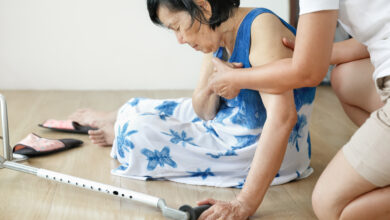New nursing lab teaches home-care skills
A university has made a mock-up of a patient's residence for healthcare students. By Aileen Macalintal
With health services increasingly providing recovery and long-term support for people at home, a new Immersive Domestic Nursing Laboratory at the University of Ballarat is giving nursing students practical training in home care. The $950,000 laboratory was created with support from the federal government's Teaching and Learning Capital Fund.
Professor Sally Wellard, the acting head of the School of Health Sciences, told Nursing Review how important the new facility was for training nurses in a simulated home environment.
"Nursing roles include delivery of care in people's homes, as well as planning and educating patients and their family for discharge care after leaving hospital. Therefore, understanding how to work with people in their home will assist students to identify the need for customising their intervention," she said.
Wellard said students needed to adapt their approach to every context and negotiate with people in their own spaces.
"This space offers learning experiences that are within a client's world rather than the usual laboratories that re-create hospital-type settings," she said.
The facility is also used to train students of midwifery, paramedicine, psychology, social work and exercise physiology. Modules and topics include manual handling, risk assessment, planning care, breastfeeding, wound care and mobility support. Health professionals can advance their professional development here too.
"Any clinical application of care that may happen in community, plus district nursing, might be included," Wellard said.
Paramedics and healthcare professionals need to be familiar with various settings to identify possible hazards and obstacles. To create different home settings, furnishings can be changed in the lounge room, bedroom, bathroom, toilet, and kitchen eating areas; for example, to change it from an older person's home into a young person's flat.
A fully fitted out ambulance and a small sedan are also housed in an annex. These vehicles let students practise the transfer of patients and how to work safely in confined spaces.
This teaching space, known as the Simulated Home Environment Learning Space (SHELS), includes an adjacent 50-seat auditorium that allows observers to view the rooms of the simulated home through glass walls and via live video feeds - which can also be streamed to external viewers.
Both staff and students appreciate the opportunities for hands-on learning that the lab offers. They can capture real-life situations and analyse issues that they may confront.
"Academic staff are very excited about the possibilities of using this space," said Wellard. "They realise they are only limited by their imagination."
Email: [email protected]





